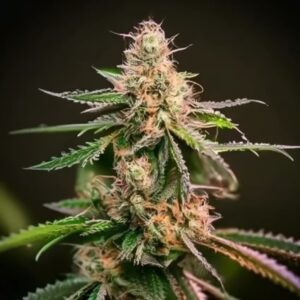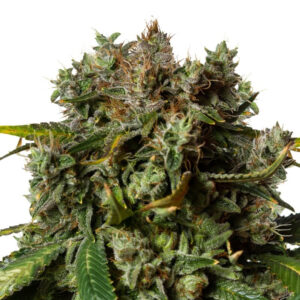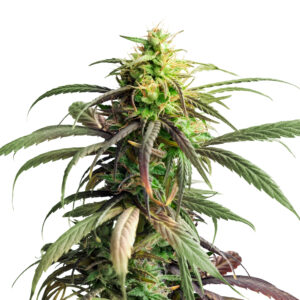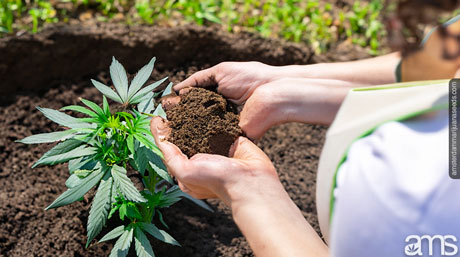 By:
Joe Green
By:
Joe Green
Nothing should dampen your motivation to grow cannabis. Nothing. Not even extreme temperature. Sometimes, you might need a regular personal supply of marijuana throughout the year. It becomes tricky as the best weather and environmental conditions necessary to help grow your plant are not constant throughout the year. Then what do you do? You need a few growing hacks to help you through those times of the year when the temperature is not favorable for cannabis cultivation. Learning to grow your favorite cannabis seed in any weather condition is essentially the best way to make sure you never run short of marijuana.
As the winter months approach, it is common to see many cannabis farmers putting away their pH meter, pots, and fertilizer. Some of them simply believe the planting season for the year is over. But who says you can’t grow your favorite strain during the time of the year when you need it the most? Growing cannabis in the winter requires some essential skills. Dealing with the freezing and miserable cold extremes is bad enough, and you don’t want your plant to suffer the same ordeal. All you need is the right strategy to help your plant through the darkest and coldest night of the year.
Learning how the cold weather interacts with your plant can help you make the right choice. However, even if you decide to grow cannabis indoors, the cold environment might adversely affect your plant. Protecting your plant starts with understanding your plant’s in-built response to cold.
The root serves a huge purpose in plant anchorage and nutrient distribution from the soil. If you grow a marijuana strain with a heavy bud yield, the chances are that your plant will need better support throughout the growing season. This is where the root comes in handy. In addition to providing anchorage, the roots also extract nutrients directly from the cannabis fertilizers you’ve applied. So, taking care of the root takes priority if you will grow marijuana during the winter. Keeping the root at the right temperature helps; it performs its physiological role properly during the vegetation and flowering stages.
Cannabis root metabolism immediately slows down once the room temperature drops below 12 degrees Celsius. At this temperature, the tiny, microscopic pores of the roots close. As a result, the root struggles to absorb water, oxygen, and nutrients from the soil. As this happens, the enzymatic process required to initiate the growth of the buds, leaves, and flowers slows down. Plant proteins and other nutrients sensitive to extreme cold are also deactivated. In some cannabis strains, extreme cold weather may also trigger a cascade of reactions leading to hermaphroditism. This means the cannabis plant develops pollen sacs and buds and also self-pollinate. This single event can extremely reduce your harvest returns.
Experienced cannabis farmers dread plant mold. As moisture builds up in the air, the plant tends to retain more surface water. Moisture from rainfall, snow, and frost complicates this process. The moisture retained in the atmosphere builds on the plant and triggers the formation of mold. Once mold tissue develops on the leaf, they cover the important anatomic features of the leaf and disrupt leaf physiology. Removing mold tissues can be very difficult. If your plant develops mold tissues for a long time, it also affects flower health. Cannabis plants with mold tissues lose their flowers earlier than expected. The flowers simply rot away and fall off.
By now, you probably understand why cold weather isn’t appropriate for your plant. But, it is still possible to grow cannabis during this time of the year. All you have to do is understand the growing tips to keep your plant healthy if you are ready. We have highlighted a selection of proven tips you can adopt below.
How a plant reacts to growing conditions depends very much on its genetics. Just like in humans, genetics shapes a plant’s life cycle and determines how it behaves from seedling to harvesting and curing. Selecting a winter-appropriate cannabis strain helps you solve a lot of problems. Compared with regular strains, strains that fall in this category are resistant to cold temperatures and have physiological resistance to molds and increased moisture. A winter-resistant cannabis strain is capable of flowering even in northern latitudes and is mostly Indica strains. Strains bred with genes from the Netherlands, Canada, and the Himalayas seem to have a genetic resistance to cold-temperate climates.
Not all cannabis strains fit into this category. Over the years, cannabis breeders have tried hard to develop strains that are suitable for winter cultivation. Our best selection of cannabis strains in this category includes White Widow, Skunk XL, Northern Light feminized. These strains have been proven to give a good yield even when cultivated in cold temperatures.
A greenhouse might be your best shot at growing your marijuana strain in a controlled space. Controlling lighting, temperature, and humidity will become a lot easier in a greenhouse. In addition to helping you closely monitor your plant growth, a greenhouse also helps you keep your plant away from prying eyes. Since the volume of natural light fluctuates largely during winter, you will want to invest in a grow light. In addition, there is a reduction in the daylight hours. If your plant stays too long in the dark, the stages of photosynthesis may be disrupted.
Also, keeping a grow light active during the coldest nights will keep the plants warmer. Whatever you do, your cannabis plant must get at least 12 hours of light every day. This is important for bud formation. If lightning poses a huge problem, you should consider selecting auto-flowering strains. These cannabis strains automatically switch to flowering regardless of the light hours they get.
If you are a big fan of cannabis micro-cultivation, growing your cannabis plant during winter is still a huge possibility. You are well prepared to help your plant solve a bulk of the problems it would probably face. Maintaining the grow room within the best temperature range makes sure the plant’s physiology runs smoothly. Proteins remain active, and the enzymatic reaction necessary for bud development remains active. First, however, you have to be smart about it.
During the day, your grow room temperature should be between 25-30 degrees Celsius (75 – 80 Fahrenheit). During the night, keep the temperature between 18 and 22 degrees Celsius (65 – 72 degrees Fahrenheit). Make sure the temperature is within range and never drops below 15 degrees Celsius (60 degrees Fahrenheit). In addition to all these, make sure there is only a small difference between the daytime and nighttime temperatures. If the temperature difference becomes too big, your plant might probably develop widely-spaced internodes. During the first 3 weeks of flowering, keep the temperature gap at not more than 5 degrees. During the rest of the flowering period, the gap can be up to 10 degrees Celsius (18 degrees Fahrenheit).
If you have temperature under control, your next target should be keeping the prevailing humidity under a steady range. During winter, the temperature drops significantly. As hair temperature decreases, the volume of water retained as vapor also decreases. Subsequently, the relative humidity around your marijuana plants becomes messed up. As a rule of thumb, keeping your plant warm in winter is the best way to control humidity at an optimum range. Stomata opening depends very much on humidity control in winter.
If the relative humidity is too low, the stomata open less often. Just as low humidity can cause a problem, high humidity can also negatively affect your marijuana plant. During the vegetative stage, it is recommended that you maintain a humidity level between 40 – 60%. There are many ways you can go about this. You can simply cover the cold floors with an insulating material or directly lift the plant pot away from the floor. If you are a big fan of agro-tech inventions, you can also use a humidifier. To track humidity levels throughout the day, consider getting a hygrometer.
You might have to invest in a growing pot and adopt a proven cannabis growth strategy. There are a few grow pot selection types you can choose from. Directly growing your cannabis plant into the soil is not the right option during winter. You might have to move the tender marijuana shoots around during windstorms or heavy rainfall. The weather conditions in winter are largely unpredictable. A mobile grows plant keeps you a step ahead every time. Once you are ready for transplanting, map out the best spot in your garden. This spot should get direct sunlight and naturally have optimum temperature such that there is less risk of frost at night.
Cold winter temperature should never stop you from growing your favorite marijuana strain. If you select a winter-appropriate and use the tips highlighted here, you just might have a normal growing season. Staying a step ahead armed with the right skill will surely give you a year-round harvest. Nothing should stop your cannabis motivation, not even winter!













Related Posts

Understanding your soil is the first crucial step to successful marijuana cultivation. Contrary to popular belief, soil is not just ‘dirt’. It’s a complex ecosystem teeming with life, providing the essential nutrients that your cannabis seeds need to grow into sturdy plants.

Make sure you plant other plants around them to make them blend in. You don’t want your neighbors to be asking you Is that a pot plant?

The autoflower pot seeds from Amsterdam are a paradigm of effortless cultivation. They represent self-sufficiency, smoothly transitioning your pot plant from germination to vegetative phase and into flowering, without any intricate interference or alteration of light cycles by the grower.